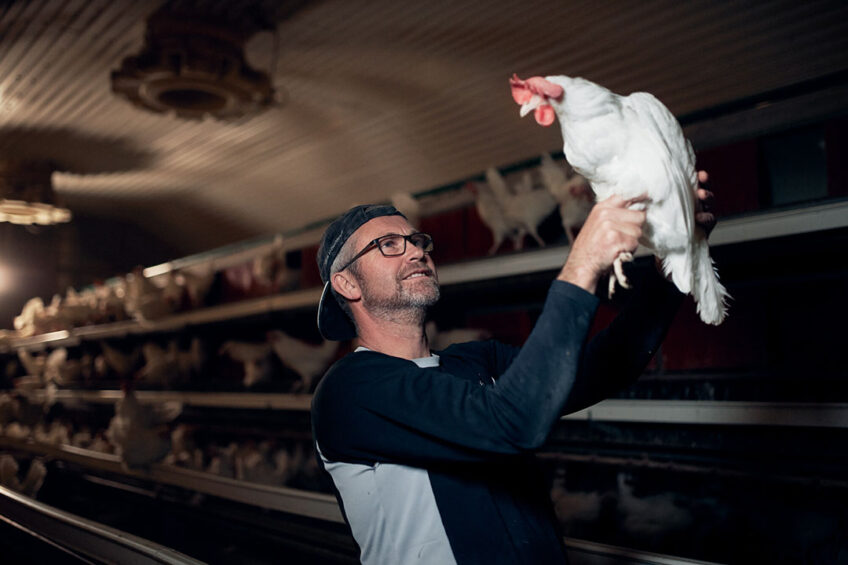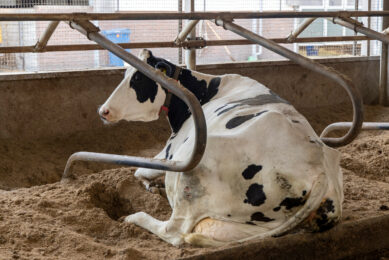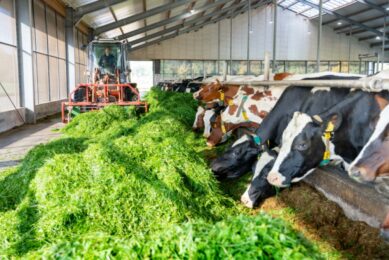Innovation and sustainability: The best of both worlds

Animal producers face a dual challenge: cope with welfare constraints and increasingly demanding consumer needs while making sure they remain competitive and financially efficient. Are there strategies enabling a cost neutral and environmentally sustainable growth?
As the global population grows and demand for livestock products increases concurrently, pressure mounts on the animal production sector to expand but in a sustainable and ethical way. The welfare and sustainability concerns unequivocally entered the livestock systems agenda and gave rise to new and far-reaching regulations in a growing number of countries. Nevertheless, to meet the UN Sustainable Development Goals (SDGs) the animal production industry must work collectively to overhaul the livestock sector. In fact, a concerted effort by the animal production sector is ongoing to address their stakeholders’ demand for transparency, accountability, and action on important sustainability issues.

Sustainability refers to meeting present needs without compromising the ability of future generations to meet their own. Limiting GHG emissions, reducing nitrogen and phosphorus pollution, and lowering antibiotic use, for instance, are crucial to achieve SDG’s goals. Ensuring animal wellbeing is also key to sustainable development. This involves improving animals living conditions and providing a balanced diet to sustain optimal performance. Animal production companies are left facing a dual challenge: cope with welfare constraints and increasingly demanding consumer needs while making sure they remain competitive and financially efficient.
Reducing nitrogen and phosphorus pollution
Manure is among the major sources of global environmental concerns. Most animal manure pollution involves nitrogen (N) and phosphorus (P) contamination of water through soil erosion and run off. All livestock waste contains N and P, but poultry manure often has a higher nutrient content than other types of manure. Indeed, poultry accounts for approximately 50% of animal feed phosphate consumption worldwide with producers adding P with large safety margins to prevent deficiency and this leads to excess mineral excretions. Chickens are also among the most important contributors to ammonia emissions. This is largely influenced by an oversupply of protein and/or amino acids in the diets added to ensure that the bird’s requirements are fully met. The sector has found solutions to control poultry excretion content but as the industry continues to grow the pressure to decrease manure pollution rises.
Phytase supplementation can help to tackle this issue. The development of new phosphatase enzymes (i.e. phytase) has improved P and amino acid digestibility, thus reducing contamination of soils and water. The ultimate challenge – demonstrating that full elimination of inorganic P supplementation could be achieved – was overcome. A highly efficient phytase, Axtra Phy Gold, was able to completely replace P supplementation while ensuring normal growth characteristics and bone strength, and still improving performance if combined with a xylanase (Figure 1).
Improving gut health without antibiotics
For years, antibiotics have been used in animal production to prevent and treat disease outbreaks, and thereby enhance animal growth. However, the looming threat of antibiotic resistance and the presence of drug residues in animal products are serious concerns. In most developed nations, livestock alone uses 50-80% of all antibiotics produced with poultry leading the charts. Using antibiotics in animals for clinical reasons is vital for the general wellbeing of animals, and should not be delayed or avoided. But unnecessary use or overuse of antibiotics threatens their effectiveness with important consequences for human medicine. Antibiotics are still used as growth promoters in some countries but some specific markets, e.g. Europe have prohibited antibiotic use for productivity enhancement purposes. This ban has, however, led to performance issues and increased levels of certain diseases on poultry farms. Hence, farmers and animal feed companies are still on the lookout for alternatives that guarantee high performance and profitability without compromising animal health. Knowing that one of the best ways to avoid antibiotics overuse is to have healthier and more resilient animals, and that gut microbiota plays a key role in general animal health, led to the emergence of probiotics. For example, research on live microbial feed supplements showed improved gastrointestinal stability. Moreover, probiotics positively modulate the composition of the intestinal microflora of broilers by stimulating potentially beneficial populations, such as Lactobacillus and/or the reduction of potentially pathogenic bacteria like E coli.
Safeguarding overall animal wellbeing
Although health and welfare are not interchangeable concepts, an animals’ good health is the first step to establish and safeguard overall wellbeing. To guarantee a healthy growth with high performance, producers must provide the correct amount of food that meets nutritional requirements, and at the same time avoid disease. Animal health is closely linked with gut health because a correct nutrient absorption depends on the intestine integrity. Promoting a healthy gut and providing a balanced diet benefits the animal’s immune system. In turn, improved immunity lowers the risk of animal loss and morbidity during disease outbreaks. Disease is a central concern to animal welfare and an operational and financial nightmare for farmers. One of the most frequent and prevalent parasitic diseases of domesticated food animals, Coccidiosis, is estimated to cost the poultry industry US$ 3.2 billion per year. Around 80% of those costs are due to losses in zoological performance. Reducing the incidence and impact of diseases such as Coccidiosis is decisive to meet animal welfare standards and avoid economical and sustainability disruptions. This is why the animal feed sector has been consistently partnering up with researchers to develop solutions that tackle these pressing concerns. Natural feed components, such as natural betaine for example, equip the animal with an extra protection against infection. Through its osmolyte and methyl donor functions, betaine protects cells from osmotic stress and supports essential biological functions. Trials on Coccidiosis-challenged broilers show that betaine supplementation improves energy and amino acid digestibility and reduces duodenal lesions, positively influencing nutrient digestion and absorption, and overall animal health. But the benefits do not stop here; betaine also plays an important role as a stress modulator. Broilers fed with a betaine supplement saw their liveability increase significantly even when exposed to heat stress (Figure 2).
Nutribiotic approach
The welfare and sustainability challenges faced by the animal production sector are multidisciplinary and ask for a holistic approach focused on environment protection, sustained growth, and animal welfare. To ensure a cost neutral and environmentally sustainable growth a strategy that takes into consideration the way nutrients, digestion and immune function as well as the intestinal microbiome interact and impact each other must be adopted. This nutribiotic approach allows addressing several challenges simultaneously: ensuring a balanced nutrition to support health and performance; promoting a diverse and stable microbiome able to reduce pathogen colonisation; developing a healthy gut that allows nutrients to go where they are most needed, and that helps the immune system deal with upcoming challenges.
References available upon request
Author:
Dr Ceinwen Evans, DuPont Animal Nutrition
Join 13,000+ subscribers
Subscribe to our newsletter to stay updated about all the need-to-know content in the dairy sector, two times a week.






